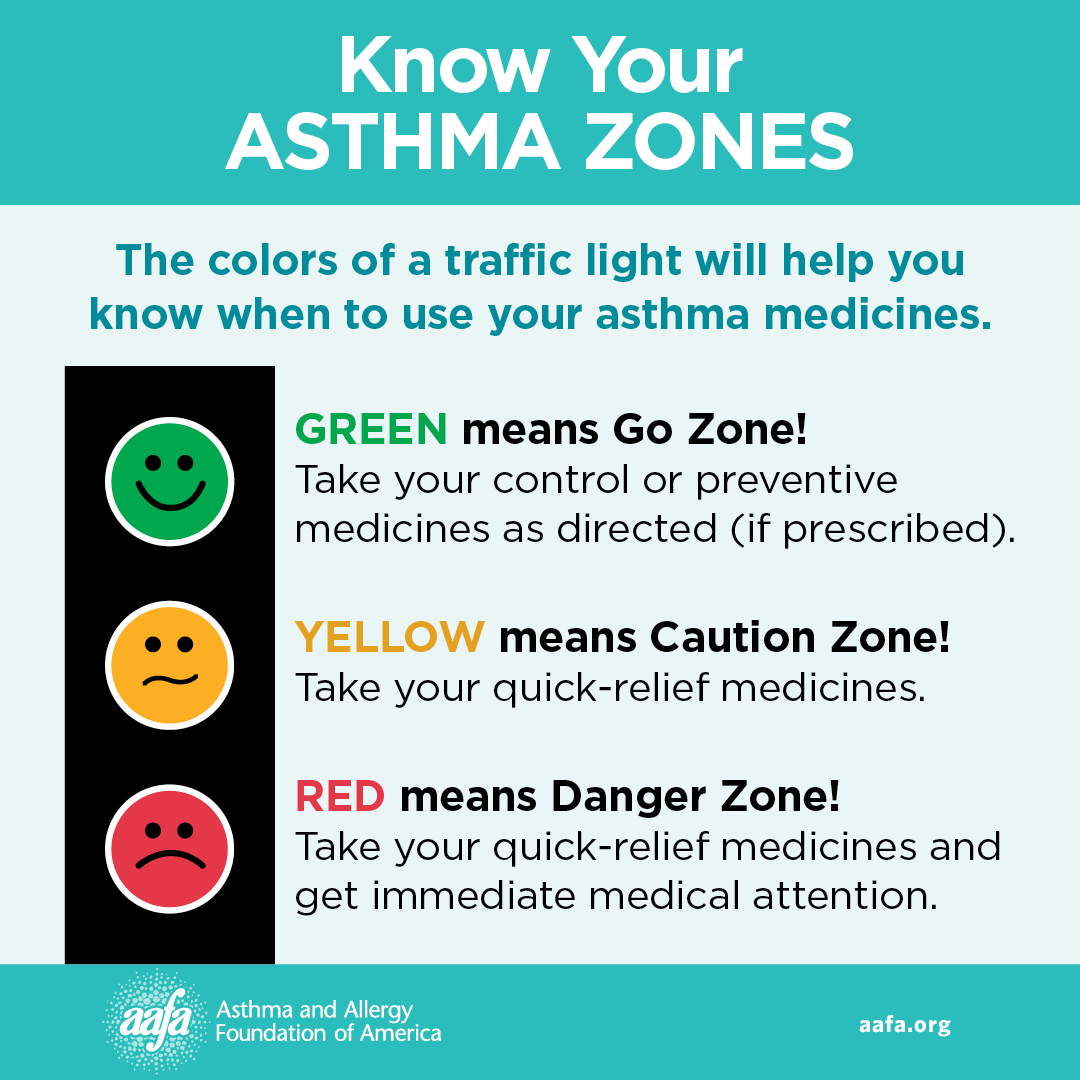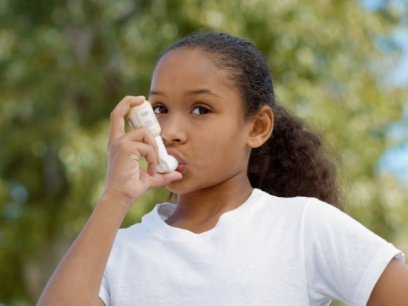
NEEF partners with healthcare providers across the country to educate them on the management of pediatric asthma and the control of environmental triggers. One of the first steps in treating asthma is to develop an Asthma Action Plan. There are many different plans available, but the overall goal of all asthma action plans is to create a self-management plan to control and prevent asthma attacks.
The plan highlights what medicine to take, how much to take, and when to take the medicine for three different “zones” of asthma symptoms: the Green Zone for when a child has no asthma symptoms; the Yellow Zone for when a child has mild asthma symptoms that are getting worse; and the Red Zone which signifies a bad asthma attack and a visit to a doctor or hospital. The form portrays the information in an easy-to-understand way so teachers, parents, and other adults interacting with children can step into action during an asthma emergency.

In addition to outlining a plan of action for managing asthma, healthcare providers can also educate children and their families on preventing asthma attacks through management of environmental triggers. NEEF has created an Environmental History Form that pediatricians can use to ask families and children about all the environments in which a child with asthma may be spending significant amounts of time. The Environmental History Form can be accessed in Cerner Corporation's Electronic Medical Record. This enables healthcare providers to keep track of patient information and easily transfer records to other healthcare facilities. Following the completion of an Environmental History Form, pediatricians and their patients can discuss ways to reduce environmental exposure to asthma triggers.
Controlling Asthma Triggers
According to the Centers for Disease Control and Prevention (CDC), common asthma triggers include:
- tobacco smoke
- dust mites
- outdoor air pollution
- pollen
- cockroach allergens
- pets
- mold
- physical exercise
- some medications
- high-humidity weather
- fragrances
Many control methods involve avoiding contact with the triggers in the first place. This may involve avoiding outdoor activity if the air quality is bad. AirNow is an online resource that informs users of how clean or polluted the outdoor air is and any associated health effects that may be of concern. In addition, some schools, businesses, and other organizations may utilize the Air Quality Flag Program, which uses colored flags to alert the community on the air quality of that day. Both AirNow and the Air Quality Flag Program can help people avoid activities outdoors when the air quality may be detrimental to their health.
Other asthma trigger control methods are more hands-on and may involve daily or weekly cleaning. For instance, to reduce the presence of dust mites, it is important to wash bedding and any soft, stuffed toys weekly. Pest management, such as filling holes, cleaning up crumbs, and using low-toxicity pesticides, may be implemented to prevent rodent- and cockroach-related triggers. Finally, it is important to keep all appliances working properly and prevent any water damage in order to prevent mold growth.
Overall, a strong asthma action plan paired with efforts to prevent environmental trigger exposure can help families and children manage their asthma in a proactive and effective way. NEEF's Guidelines for Healthcare Providers Training provides more information on environmental management of pediatric asthma.


